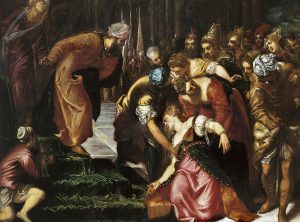Mano Singham has posted an interesting piece, Young Earth creationist argumentative strategy. Mano is pointing to an ex-creationist post explaining how creationists were trained to argue against evolution: How to Argue for Young Earth Creationism.
The fundamental point is that it’s easy to be calm and confident when you “know” you are right. As I was reading (both Mano’s extracts and the original) I found myself thinking that the same techniques are used by others who are in positions of authority or prestige, although these groups may not always consciously think of what they are doing as a “method” they need practice to apply. If some of those in authority find themselves addressing an idea that is potentially threatening to all they have invested in, it is probably a good idea not to take the challengers’ arguments too seriously. Simply extracting a few points at a superficial level will do, and then have fun with them.
That is, play with logic. Let the underdog get flustered, impatient, angry, that you are not being serious or are distorting what they are trying to express.
The real audience is not the person argued with but onlookers, your fans, your public in whose eyes you are the esteemed authority. Let the minor party lose patience with you and you’ve scored a great victory. You have demonstrated you are the rational one and the challenger is a fool.
On top of that, we were trained to always be calm, cool, and collected. There was a dialectic, after all, and there were bystanders. If we were arguing with someone, we had the obligation to be dispassionate and stereotypically “scientific”. Let the people we were arguing with get upset. Let the people we were arguing with display how attached they are to their narrative. Let them rage and rant. It is our job to stand there and be calm and have tons of facts at our fingertips. It was their job to say “I don’t know” and get frustrated.
Over and over again, it was reiterated to us that it wasn’t just about the person with whom we were arguing. There would be people watching and it was our job to present identically to how stereotypical scientists: calm, cool, collected, tons of information at our immediate recall, and the ability to withstand some angry person yelling about how they were told something different by people they trusted implicitly. . . .
We were not only communicating with the person we were arguing with. We were communicating with the audience.

